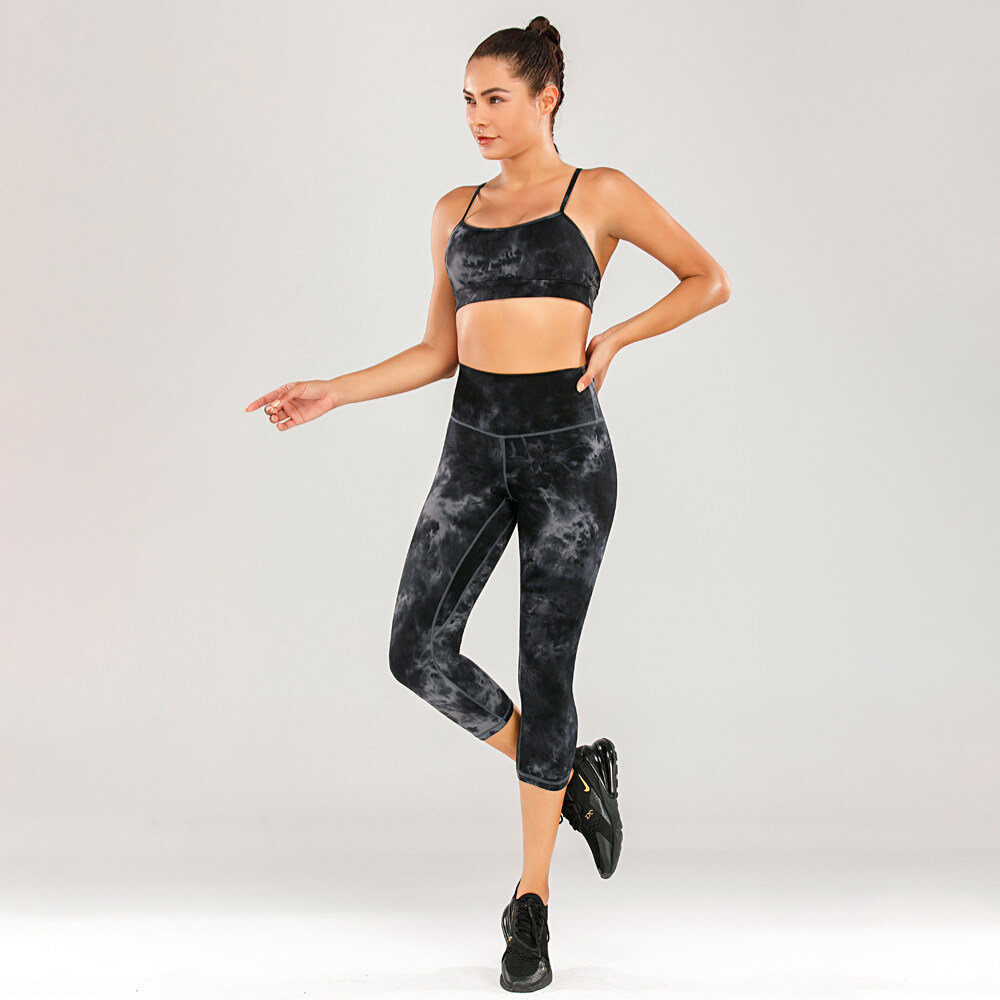Email format error
Email cannot be empty
Email already exists
6-20 characters(letters plus numbers only)
The password is inconsistent
Email format error
Email cannot be empty
Email does not exist
6-20 characters(letters plus numbers only)
The password is inconsistent

News

Material Selection for OEM Yoga Pants and Leggings
I. Introduction to Material Selection for OEM Yoga Pants and Leggings
Material selection stands as a pivotal aspect in the manufacturing of OEM yoga pants and leggings. The fabrics chosen determine not only the comfort and functionality of the apparel but also its sustainability and overall quality. In the competitive landscape of athletic wear, the right material can make a significant difference in performance and consumer satisfaction.
II. Types of Materials Commonly Used in Manufacturing OEM Yoga Pants and Leggings
Natural Fabrics
Cotton: Known for its breathability and comfort, cotton remains a popular choice. However, pure cotton may lack elasticity, which is crucial for yoga pants. Blends with spandex or elastane can enhance its stretchability.
Bamboo: Recognized for its eco-friendly properties, bamboo fabric offers a soft texture and natural antibacterial qualities. It's a sustainable alternative that appeals to environmentally conscious consumers.
Synthetic Fabrics
Polyester: This synthetic fabric is prized for its durability and excellent moisture-wicking capabilities. In the context of OEM yoga pants and leggings, polyester provides a balance of comfort and performance, ensuring that wearers remain dry during intense workouts.
Spandex/Elastane: Essential for providing stretch and shape retention, spandex or elastane is often blended with other fabrics. Its elasticity allows for flexibility, making it an indispensable component in yoga pants and leggings designed for active lifestyles.
Blended Fabrics
Cotton-Polyester Blend: Combining the comfort of cotton with the durability of polyester, this blend offers a versatile option for OEM yoga pants and leggings. The blend can optimize breathability, moisture management, and stretchability, catering to various consumer preferences.
Nylon-Spandex Blend: Nylon's strength and durability, coupled with spandex's elasticity, create a blend that enhances flexibility and shape retention. This combination is particularly beneficial for high-performance yoga pants and leggings designed to withstand rigorous activities.
III. Sustainability Considerations in Material Sourcing for OEM Yoga Pants and Leggings
Eco-Friendly Materials
Organic Cotton: Grown without synthetic pesticides or fertilizers, organic cotton reduces environmental impact and promotes soil health. For OEM yoga pants and leggings, using organic cotton aligns with sustainability goals and appeals to eco-conscious consumers.
Recycled Fabrics: Utilizing post-consumer materials like recycled polyester or nylon reduces waste and conserves resources. Incorporating recycled fabrics into OEM yoga pants and leggings demonstrates a commitment to sustainability and environmental responsibility.
Ethical Sourcing Practices
Fair Trade Certification: Ensuring ethical labor practices throughout the supply chain is paramount. Fair Trade Certification guarantees fair wages and safe working conditions, promoting social responsibility in OEM manufacturing.
Transparent Supply Chain: Establishing a transparent supply chain enables traceability and accountability in material sourcing. By partnering with suppliers who prioritize ethical and sustainable practices, OEMs can build trust with consumers and stakeholders.
Environmental Impact
Reduction of Water Usage: Implementing sustainable practices in dyeing and finishing processes can significantly reduce water consumption. Innovations in water-saving technologies and eco-friendly dyes contribute to minimizing the environmental footprint of OEM Yoga Pants & Leggings manufacturing.
Carbon Footprint: Adopting eco-friendly production methods and sourcing materials locally can help reduce the carbon footprint associated with manufacturing and transportation. Sustainable initiatives aimed at mitigating environmental impacts contribute to a more responsible and resilient supply chain.
IV. Performance Fabrics Suitable for Yoga and Fitness Activities in OEM Yoga Pants and Leggings
Moisture-Wicking Fabrics
Importance of Keeping Dry: During intense workouts, moisture-wicking fabrics like polyester and nylon play a crucial role in keeping wearers dry and comfortable. These fabrics transport moisture away from the skin, enhancing performance and preventing discomfort.
Breathable Fabrics
Enhancing Airflow: Breathable fabrics promote airflow and ventilation, ensuring optimal comfort during yoga sessions. Materials engineered for breathability allow for heat dissipation, reducing sweat accumulation, and enhancing overall comfort.
Compression Fabrics
Support and Performance: Compression fabrics like spandex and elastane provide support to muscles, improving performance and recovery. In OEM yoga pants and leggings, compression technology enhances fit and comfort, offering wearers the support they need during rigorous activities.
Four-Way Stretch Fabrics
Flexibility and Range of Motion: Four-way stretch fabrics optimize flexibility and range of motion, essential for yoga and fitness activities. These fabrics allow for multidirectional stretch, ensuring freedom of movement and comfort in OEM yoga pants and leggings.
V. Conclusion
Material selection for OEM yoga pants and leggings encompasses a diverse range of considerations, from performance and comfort to sustainability and ethical sourcing. By choosing the right fabrics and implementing sustainable practices, manufacturers can create high-quality apparel that meets consumer demands and aligns with environmental and social responsibility goals. As the industry continues to evolve, innovation in material selection and manufacturing processes will play a crucial role in shaping the future of OEM yoga pants and leggings. Embracing sustainability, ethical practices, and performance-driven design ensures a competitive edge and resonates with consumers seeking quality, comfort, and conscious choices in athletic wear.

